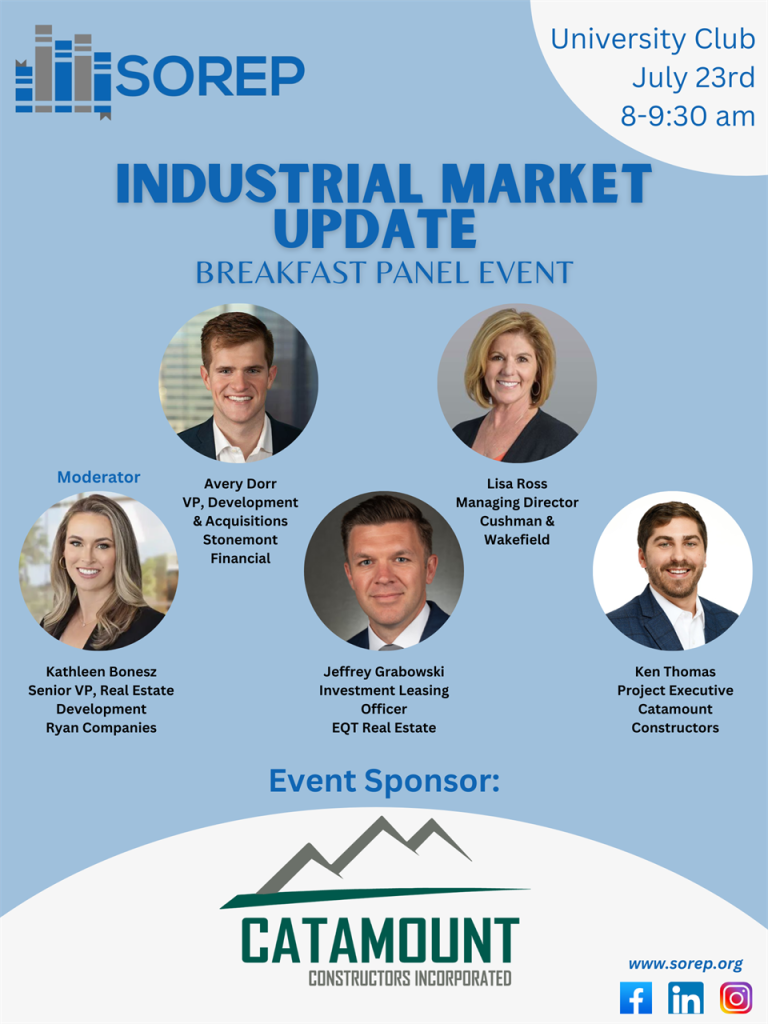
Tampa, FL, August 4th, 2025 –Written by Josh Streitmatter
Yesterday I got to hear from some industry leaders about their take on the industrial market and here is what I took away from it:
The Tampa industrial real estate market has transitioned from the rapid pace seen after the pandemic to a more measured and steady period of growth. While leasing activity has slowed compared to the past few years, the market remains fundamentally strong. Properties that once drew several competing tenants may now receive interest from only one or two, but demand continues to move forward, just at a more sustainable pace. Positive absorption returned in the second quarter of 2025, and although some deals were delayed into the third quarter, activity remains healthy. The vacancy rate rose slightly to 6.7 percent, up from its long-held position near 5 percent, though it still reflects a balanced and resilient market.
Institutional capital continues to pursue opportunities in West Central Florida, but investors have become more selective. Today’s capital is focused on fully entitled, shovel-ready projects with site plans, civil engineering, and architectural design already in place. Speculative land acquisitions have largely disappeared, and buyers now expect a clear development timeline before committing to a deal. Infill locations and core submarkets remain the most attractive, while more uncertain or outlying areas face greater scrutiny when it comes to funding.
Cap rates have adjusted upward from the historically low levels seen in 2020 and 2021, when modern industrial assets often traded below 4 percent. In the current environment, cap rates for stabilized Class A properties in the Southeast generally fall between 5.5 and 6 percent. This reflects increased borrowing costs and a shift in perceived risk. Although short-term interest rate fluctuations continue, cap rates are expected to remain relatively stable for the rest of the year. Any material changes will depend on broader economic factors such as employment levels, leasing demand, and future Federal Reserve policy.
While concerns about overbuilding have surfaced, the issue is more accurately described as a temporary oversupply resulting from the volume of projects launched during the last development cycle. At the current pace of leasing, West Central Florida is projected to absorb its available inventory in under two and a half years, which supports the continued development of well-located speculative projects. Smaller Class A bay space, especially under 50,000 square feet, remains in high demand across the region. At the same time, Class B and C industrial properties are being returned to the market more frequently, contributing to the slight increase in vacancy. Redevelopment efforts are gaining momentum, particularly in the conversion of suburban office properties to industrial use, though wholesale replacement of older industrial stock remains limited due to cost and ownership structure.
Construction costs, while still relevant, are not the primary challenge developers face in Florida. Instead, land constraints and permitting delays are having a greater impact on project feasibility. Wetlands and regulatory hurdles have significantly extended entitlement timelines. Approvals that once took four months may now require nine to twelve months or longer. In certain areas like Bullfrog Creek, where wetland credits are scarce, developers are being pushed into the private market where mitigation credits can cost up to $500,000 each. These expenses materially affect land values and project viability.
E-commerce continues to drive demand for logistics space, particularly along the I-4 corridor where fulfillment centers serve a broad regional market. The growing complexity of reverse logistics has also increased the space required to process returns, which now take up a significant portion of warehouse operations. As population growth continues across Central Florida, so does the need for last-mile delivery solutions, boosting demand for smaller, infill industrial properties located close to consumers.
On shoring trends are also beginning to reshape logistics strategies, though their immediate impact may be more pronounced in port-centric markets than in Tampa. Still, the shift adds another layer of long-term demand for warehouse and distribution space across the state. Institutional investors remain active and are not holding back on acquisitions. Many have raised large funds and are actively deploying capital. Investors are focusing on larger, stabilized assets and are exploring opportunities in other undervalued regions where recent corrections have created renewed interest.
Overall, the Tampa industrial market remains in a healthy position. Although the momentum has eased from its recent highs, the fundamentals continue to support growth. Capital is available, tenant demand is present, and developers are adjusting to a new normal that prioritizes preparation, discipline, and timing. While challenges persist, particularly with entitlement and site costs, the region remains well-positioned for long-term success.
Looking for Industrial Land in Tampa Bay or Beyond?
Let’s connect to discuss your site criteria and explore what’s available. Reach out to me at 813-287-8787×113 or josh@thedirtdog.com anytime, I’d be happy to help you find the right fit.
